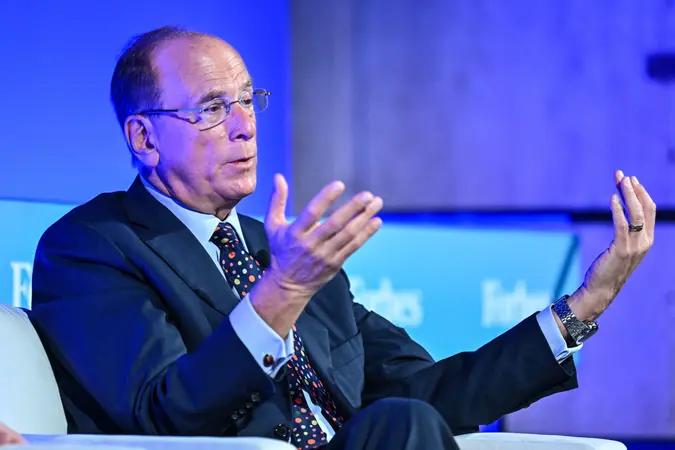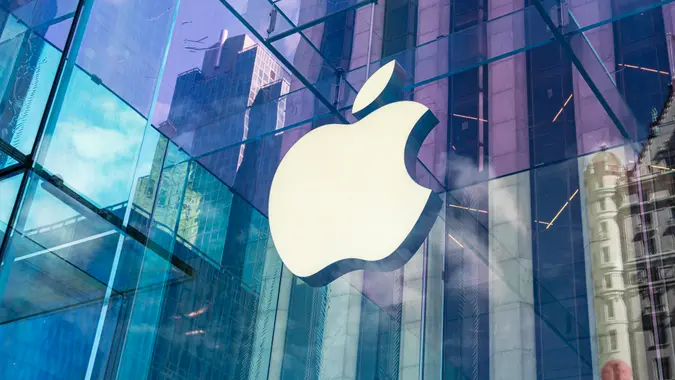New I Bond Rate of 3.11% Announced: What It Means for Your Investment in 2024

Commitment to Our Readers
GOBankingRates' editorial team is committed to bringing you unbiased reviews and information. We use data-driven methodologies to evaluate financial products and services - our reviews and ratings are not influenced by advertisers. You can read more about our editorial guidelines and our products and services review methodology.

20 Years
Helping You Live Richer

Reviewed
by Experts

Trusted by
Millions of Readers
On Oct. 31, the U.S. Treasury announced the I bonds current rate. The rate for Nov. 1, 2024 to April 30, 2025 is 3.11%, which includes a fixed rate of 1.20%. This is down from their previous rate of 4.28%.
I bonds are a popular investment thanks to their low risk profile and inflation-protected nature. However, with rates decreasing significantly, investors will see a change to their returns. Not only will these lower rates affect new bond investors, but also those who previously purchased bonds and will now earn the new lower inflation rate.
How I Bond Interest Rates Are Set
I bond interest rates are set every six months by the U.S. Treasury. These bond rates have two components: a fixed rate and an inflation rate. Here are some key points to know:
- Like other types of bonds, I bonds have a fixed rate that remains the same for the entire bond term. Investors who buy their bonds during the six-month period of November 2024 through April 2025 will earn a fixed rate of 1.20% until their bond reaches maturity.
- The inflation rate applies to all new and existing bonds and changes every six months. The inflation rate is based on changes in the Consumer Price Index. Regardless of when a bond was purchased, it earns the current inflation rate.
- The higher the current inflation rate, the more you’ll earn on your I bond. Conversely, a lower inflation rate will lead to lower I bond returns.
- The fixed rate and inflation rate together make up the combined rate, which is the total annual interest rate on the bond. The combined rate on all I bonds, new and current, changes every six months when the inflation rate changes.
What the New I Bond Rate Means for Investors
The I bonds current rate of 3.11% is the lowest since early 2021, when inflation started to rise, bringing I bond rates with it. The previous combined I bond rate from May to November 2024 was 4.28%, while the rate before that was 5.27%.
The new inflation rate affects both new and existing bondholders. For example, if you purchased your bond two years ago, you’ll keep the same fixed rate you had when you purchased the bond, but your inflation rate and combined rate will be reduced.
Bond returns will be even lower for new bond purchases since both the fixed rate and inflation rate have decreased from the previous period. The good news is these lower rates are reflective of easing inflation — but they also mean lower investment returns.
Good To Know
Depending on when you purchased your bonds, you may not see changes immediately. While the U.S. Treasury adjusts the rates in May and November, rates only change for individual bonds every six months.
For example, if you purchased your bond in August, your bond’s inflation rate will adjust every year in February and August.
Why Some Bonds May Pay Less
When you invest in I bonds, your earning potential is based on a few key factors:
- Fixed-rate component: The fixed rate remains the same for the entire bond term, so someone who bought their bond in November 2022 will earn a different fixed rate than someone who purchases in November 2024, even while earning the same inflation rate. The fixed rate available is based on the current rate environment.
- Timing of bond purchase: The time of year you purchase your bond affects when your rates adjust. While the U.S. Treasury releases new rates in November and May, your bond rates will adjust based on when you purchased them.
- Inflation rates: When the U.S. Treasury adjusts I bond inflation rates, it does so based on current inflation. Because inflation is declining in 2024, the inflation rate available on I bonds has also declined.
To give you an idea of how timing affects bond rates, here’s a comparison of a new I bond purchased in November 2024 and one purchased in July 2022, assuming both investors invest $1,000.
An investor who purchased their bonds in July 2024 has a fixed rate of 1.30% based on the interest rate market at that time. This investor will also continue earning the previous 1.48% inflation rate until their rate adjusts in January 2025.
Meanwhile, an investor who purchases their bond in November 2024 will earn the current combined rate of 3.11%, with a fixed rate of 1.20% and an inflation rate of 0.95%.
In January 2025, the first investor will have their rate adjusted to the current inflation rate. However, because they have a higher fixed rate than the second investor, they’ll continue to earn slightly more.
Impact of I Bond Rate Changes on Your Investment Strategy
There’s a unique economic environment in late 2024 where both interest rates and inflation are declining. As a result, both the fixed rates and inflation rates on I bonds are declining, which reduces the earning potential for investors.
That doesn’t necessarily mean you shouldn’t continue investing in I bonds. They have a place in a broader investment strategy, especially for conservative investors. Not only do you not run the risk of losing your principal investment as you do with stocks, but you also know your returns will keep pace with inflation because of the fluctuating inflation rate.
The I bonds current rates are still higher than other inflation-protected bonds, such as Treasury Inflation Protected Securities (TIPS). Additionally, the low-risk nature of Treasury securities may make them attractive to conservative investors over corporate bonds. Finally, keep in mind that as interest rates fall, rates on all bonds are likely to fall with it, not just that of I bonds.
No matter the current interest rate and inflation environment, it’s important to balance your fixed-income investments, including I bonds, with your broader investment portfolio, including stocks and other asset classes. Having a well-diversified portfolio can help shield you from the risks presented by any individual investment.
How To Maximize I Bond Returns
One way to maximize your I bond returns is to purchase them in a high-rate environment so you can get the highest possible fixed rate. However, that’s not always possible, especially during a time like late 2024 when interest rates are falling.
Another way to maximize your I bond returns is to hold them for at least five years before cashing them out. Though the U.S. Treasury allows you to cash in your I bonds after as little as one year, cashing them in within the first five years will result in losing your final three months of interest.
Luckily, the inflation-protected nature of I bonds helps to maximize your returns to a point. As inflation rises, the inflation rate on your bonds will also rise to ensure that your returns are at least keeping pace with inflation, even if they aren’t outpacing it.
Finally, keep in mind that you can only buy up to $10,000 in electronic I bonds per year and up to $5,000 per year in paper I bonds. If you plan to invest more than that in bonds each year, you can balance your I bonds with other bond purchases.
Conclusion: Key Takeaways for I Bond Investors
I bonds are a popular investment due to their low-risk and inflation-protected nature. Like other government bonds, I bonds are backed by the federal government, so you can trust they’ll be repaid. Additionally, because they have both a fixed-rate and inflation-rate component, the latter of which adjusts throughout the bond term, you know your returns will keep pace with inflation.
Of course, every investment has some risks, and I bonds are no exception. In today’s economic environment, where both interest rates and inflation are falling, I bond returns may not keep up with other asset classes, especially those that carry a higher risk. However, they may still have a place in your investment portfolio.
If you’re a current I bondholder, make sure to monitor future inflation reports and Treasury inflation rate adjustments to see how your bond returns will be affected.
Takeaway
Finding and working with a financial advisor is a great idea. A financial advisor will help keep track of your finances and assist you in attaining your financial goals. While finding the right one can be overwhelming, you can decide to work with a financial advisor in your community or a virtual one.
Our in-house research team and on-site financial experts work together to create content that’s accurate, impartial, and up to date. We fact-check every single statistic, quote and fact using trusted primary resources to make sure the information we provide is correct. You can learn more about GOBankingRates’ processes and standards in our editorial policy.
- TreasuryDirect. "I bonds interest rates."
 Written by
Written by  Edited by
Edited by 

























